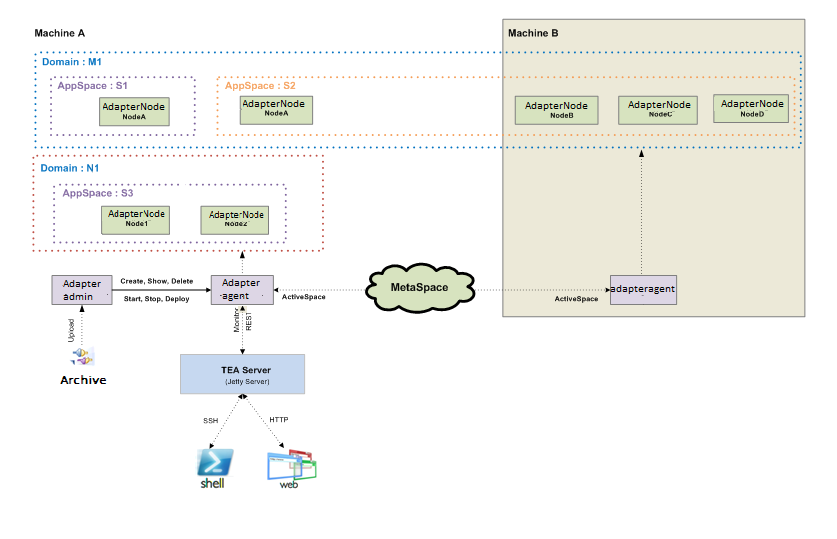Introduction to Adapter Administration
TIBCO ActiveMatrix Adapter® Framework provides a set of Adapter administration utilities, which you can use to deploy and monitor TIBCO adapters at run time.
TIBCO adapters bridge custom applications, databases, and other technologies in the enterprise information flow, regardless of their data formats or communication protocols.
At design time, you can configure a TIBCO adapter to make an application part of TIBCO infrastructure without any changes to the application. After configuring the adapter in TIBCO Business Studio, you can use adapter administration utilities to deploy the adapter and monitor the adapter at run time. Additionally, with TIBCO® Enterprise Administrator, you can also view and monitor adapters in the Admin UI provided by TIBCO Enterprise Administrator (TEA).
- An application archive is a deployment unit for an adapter application that is generated in TIBCO Business Studio.
- A domain is a logical group that provides an isolated environment for applications and their resources. A domain can contain one or more app spaces.
- An app space is a group of one or more adapter nodes that are runtime entities hosting adapter applications. An app space can contain one or more adapter nodes.
- An adapter node is a runtime entity that hosts adapter applications.
- An adapter agent is a daemon process that is used to provision adapter nodes and applications, perform administration commands, and synchronize data from the datastore.
The following figure illustrates how the components interact with each other when adapteragent is configured using ActiveSpaces as the persistence type:
Domain M1 spans two machines, Machine A and Machine B, and contains two AppSpaces, S1 and S2. AppSpace 2 spans on both machines. Domain N1 is on Machine N1 only and contains one AppSpace, S3. The adapter agent on Machine A is configured to interact with the adapter agent on Machine B through the datastore.
The adapter agent on Machine A is registered with a TEA server to use the Admin UI that runs in TIBCO Enterprise Administrator. If the registered adapter agent becomes unavailable, the connection between the TEA server and the agent network is automatically recovered. The adapter agent on Machine B registers with the TEA server automatically. The administration architecture ensures that no single point of failure brings an application down.

